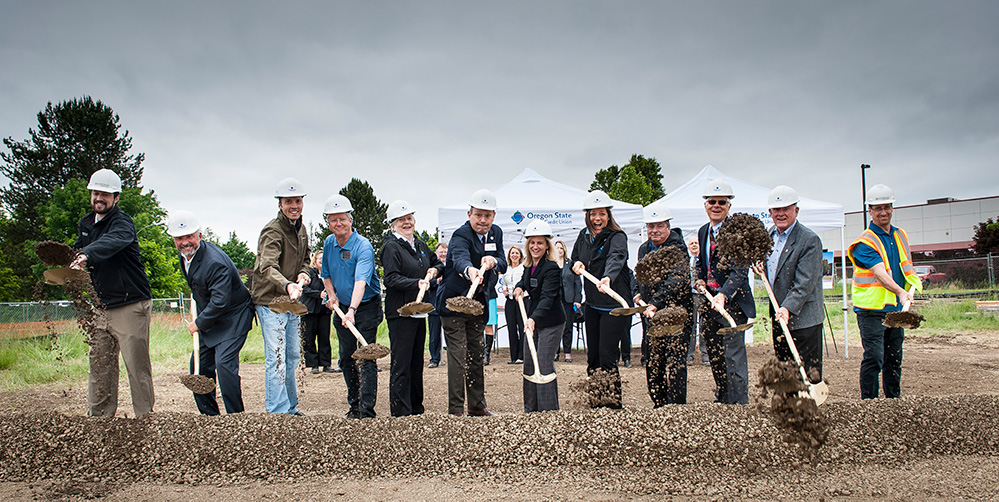5 steps to kick off a successful credit union branch project

The most impactful work in a new branch project takes place before design and construction even begin. Over the years we’ve seen that a clear definition of the purpose of a new branch project together with the early, consistent communication of that purpose are the two biggest indicators of a successful outcome.
Think about a project where the goal is to build a branch, but the project leader hasn’t clearly defined the requirements necessary to make that branch successful: They hire an architect to design the branch, but at the 95% design check-in the team hates it. There’s confusion around the branch’s features and design choices and a lot of energy is focused on discussing relatively small details. Larger questions, whether or not untethered personal technology will support improved operational efficiency, for example, don’t even surface because these goals were never established in context with the project. The project leader takes the team’s comments back to the designer, but the process falls into a cycle of trial and error that results in overspending, delays, and a finished product that the team isn’t really satisfied with.
Ultimately, the project leader may not be sure that the new branch performs any better than the one it replaced, and is hard pressed to justify the time and money the credit union has just invested. But there’s a better way. We’d like to share a five step process to align both internal and external team members around not just their individual contributions, but a shared vision of overall project success. You’ll engage your team, establish the purpose driving this branch project, define and prioritize a clear set of requirements, strategically integrate your external partners, and create a change management plan that people will get excited about.
Step 1: Engage Your Team
Start out by creating open channels of communication among the stakeholders and focusing on gathering input from your team. Not only will people get excited about a project that they have a say in, the collective knowledge of your organization is a powerful asset that you can use as a resource throughout the project.
Even if you have a clear vision in mind for your project, opening the door to contributions and input from your team is a powerful way to win them over to your side.
Step 2: Find your Purpose
All too often the process kicks off with “we need a branch” and misses that one word critical to setting a project on the right path: “why?”
If you design a branch as the discrete solution to your need, without consideration of the strategic outcomes you hope to achieve through your branch, you’re unlikely to end up with a design or strategy that fulfills your organizational goals and may fall into the trap of designing by trial and error. But if you clearly define and document your purpose from the very start of the project, every stage of the project can be focused around fulfilling that purpose. It becomes a shared goal among all of the stakeholders.
Step 3: Develop your Requirements
Work with your team to brainstorm the requirements for the project that will ensure you fulfill the branch’s purpose. Keeping with the theme of “why?”, make sure you don’t jump right into brainstorming what features you need! Instead, think about your objectives for the branch. Features can be developed during the design phase to fulfill requirements.
Bad requirement: We need a tech bar.
Good requirement: We need a way to educate members on our mobile platform.
Keep your requirements objective driven and explore as many ideas as possible. When you finish, sort them into Must Have, Should Have, Could Have, and Won’t Have categories (a MoSCoW list).
Step 4: Bring Partners on Board
Align your external team members around your goals by looking for partners rather than vendors. Think about when and how they can be integrated into your project not just for their part of the work, but when their expertise can have the most impact on the project. During planning and strategy discussions your partners can provide both valuable insights and reality checks. For example, when making design decisions a construction manager could let your team know the impact that these choices will have on the cost and schedule.
Step 5: Plan for Lasting Change
Change often sparks resistance, but engaging your team and getting everyone aligned towards a common goal doesn’t have to be a battle!
You’ve already gained team member buy-in by engaging stakeholders in the planning process. Take this a step further by establishing a project sponsor who will build enthusiasm around the project, communicate how new policies, staffing models, and processes will be carried out, and support branch staff with the training they need. Make sure there is a plan in place to follow up at ninety days and six months after project completion.
Kick Off Your Project the Right Way
Following this process requires more work up front, but the effort pays dividends when the design, construction, and operation of the branch all run smoothly. Construction projects have a reputation for being challenging and stressful, but with the right level of preparedness they can be something that your team looks forward to.





